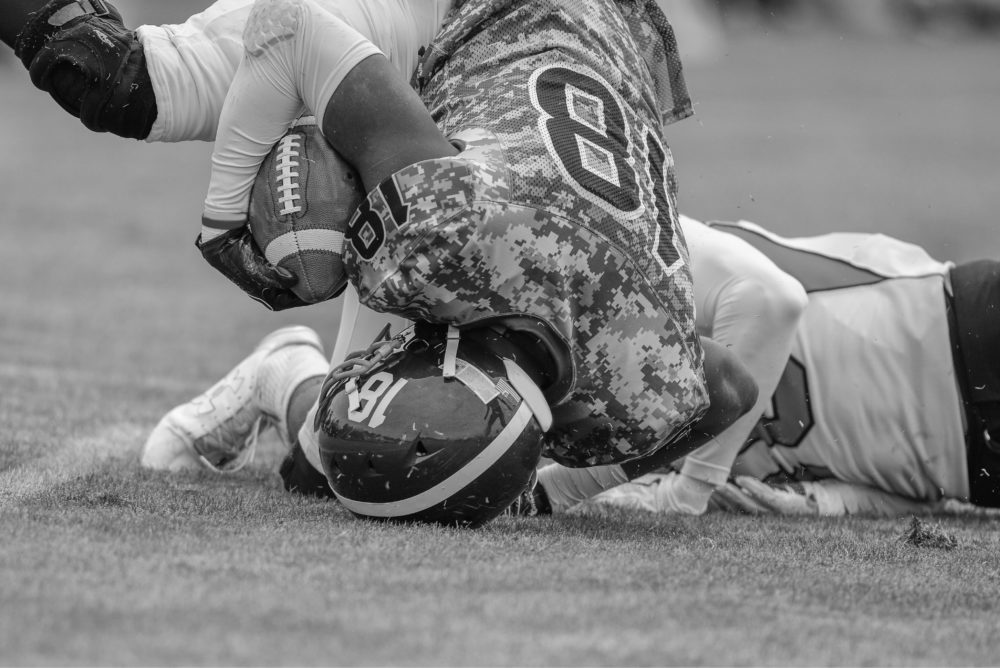
In the U.S., about 30 million children and teens participate in some form of organized sports, and unfortunately more than 3.5 million injuries occur each year.
Some sports such as contact sports are inherently more dangerous than others. However, all types of sports pose a potential for injury, whether from the trauma of contact with other players, from interactions with equipment (such as goal posts, nets, poles, etc.), from a fall to the ground, or from overuse or misuse to body parts such as muscles, ligaments, tendons, and bones.
Unlike sprains, strains, contusions, abrasions, and broken bones, concussions are primarily “invisible” injuries. An athlete can seem perfectly fine in the aftermath when in reality, their brain has suffered significant trauma.
The Definition of A Concussion
Sports and recreational activities contribute to approximately 21 percent of all traumatic brain injuries among American children.
The brain is soft and fragile so the body protects it by surrounding it in cerebrospinal fluid inside a hard skull. Because the brain floats in fluid, it can move around and even bang up against the skull causing a bruise, a tear in blood vessels, or injuries to nerves. A concussion is when there is trauma to the head that causes a temporary loss of normal brain function.
Signs of a Concussion
Concussions don’t always show up immediately, especially in children. It can take up to 3 days for signs to become obvious. It is wise to see your doctor if your child has had a fall or hard contact where their head was involved even if no apparent symptoms have surfaced.
Some signs and symptoms of a head concussion are:
- headache
- dizziness
- nausea
- vomiting
- difficulty with coordination or balance
- blurred vision
- slurred speech or saying things that don’t make sense
- feeling confused and dazed
- difficulty concentrating, thinking, or making decisions
- trouble remembering things
- feeling sleepy
- having trouble falling asleep
- sleeping more or less than usual
- feeling anxious or irritable for no apparent reason
- feeling sad or more emotional than usual
Preventing Sports Concussions
Preventing sports concussions begins with being outfitted with properly fitting, sport-appropriate headgear, mouth gear, and safety equipment when playing contact sports of any kind.
It is challenging to prevent every concussion but helmets, mouthguards, and other protective gear can reduce the risk and severity of a brain injury.
How To Best Recover From A Concussion
Always heed your child’s doctor or pediatrician’s advice and instructions following a diagnosis of a concussion or suspected concussion in your son/daughter.
Here are some additional recommendations for allowing your child the best prospects for recovery after experiencing a concussion:
- Follow up with your healthcare provider if your child’s symptoms worsen in any way (both physical as well as in mood or demeanor)
- Limit reading, T.V., and screen time as these activities cause the brain to activate while it needs to be resting.
- Encourage slow and calm movements, nothing jarring or abrupt.
- Help your child eat well to nourish their body as it heals from a concussion. There are foods that are researched and known to reduce inflammation in the body.
- Assist your child in avoiding bright lights and loud sounds/noises. These can exacerbate headaches, nausea, dizziness, and sensitivity to light.
- Provide supplements with magnesium and zinc which also help the body recover from trauma.
How Chiropractic Care Can Aid in Post-Concussion Protocols
If your child has experienced a concussion, whether major or minor, schedule a visit with Dr. Lydia or Dr. Emily at Vaida for chiropractic care.
Scheduling a chiropractic adjustment after a concussion can help with other general aches and pains as your child’s body resets. It can also help reduce muscle tension in the upper back, shoulders, and neck which are almost always affected when there is head trauma.
Dr. Lydia is trained in nasal release technique (as an add-on to chiropractic adjustments). This treatment helps to adjust the internal cranial sutures that may become misaligned from a blow to the head. Call or email Vaida Wellness to learn more.
